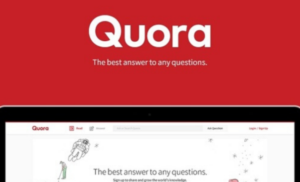Well, there are three main areas that we see based on the research we’ve done and the conversations we have with organizations that are tackling this issue. The first one is asset costs. How can you reduce the storage costs? Maybe you’ve got a few hundred boxes of paper invoices and associated documents stored somewhere that really aren’t adding a lot of value.
Getting access to the invoices and supporting documents can be tricky in that environment, so how do we improve the access to them so we don’t have to dig through those boxes when something gets lost. And eliminating overall lost invoices is a big problem as well. If your providers offer the option, continually pick out virtual invoices so you can import them immediately for your accounting payable software program in preference to manually getting into the information. If you operate an accounting software program that incorporates a scan-and-pay feature, you may snap a photo of the seller bill and add it to capture as a buy transaction.
The next item then we look at processing costs. Can we reduce manual effort and duplicate data entry wherever possible. That could have a significant impact on your headcount. What if we want to increase productivity as volumes increase of invoices?
Again, another area where headcount reduction might be possible. And then what if we want to look at how we can reduce late and duplicate payments and overall approval times, speed those up. So those are the focus of the processing cost area. And then, the last but not least would be management costs.
You know, management oftentimes doesn’t have visibility into the liability that’s taking place on invoices that are in the queue. There’s no controls or reporting that are taking place on those invoices and it sure would be nice to have that information at your fingertips.
How do we ensure compliance and audit requirements? And last but not least, we want to make sure vendor inquiries and relations. We’ll talk a little more about these as we move forward.
So we’re focused here on invoices, but really it’s much more than invoices, that’s just the tip of the iceberg.
There is a lot of unstructured content and dispirited data to manage across the board. Cancelled checks, purchase orders, credit memos, remittances, collection notices, expense reports, vendor management contracts, contacts, discount structures, all kinds of information outside of just the standard invoice.
Automation Stages and Best Practices
Regardless of what anyone else will tell you, there’s really no magic process automation that fits everyone. There are many point solutions out there that will tell you that there is and you need to follow their best and refined process.
Putting a technology solution before your business process requirement is like putting the cart before the horse. So there isn’t an automation standard for everyone, there are lots of different variables involved here. Cost, timing, priorities, existing processes, user preferences, all of those things need to be used to determine what’s right for you at the right time.
Based on our experience, we’ve summarized these most common high-level stages of automation and we’re going to walk through those briefly.
Stage One
And so first and foremost would be stage one where you’ve got invoices coming into multiple locations.
They are being manually entered into your ERP system, probably late within the process. You’re moving them around for approval. Often times we’ll see folks putting stamps on these paper documents to include their initials and GL codes.
And then after the approval process has taken place, the information entered manually into your ERP system and a check is written, and maybe at the end of that process, the document is scanned for retrieval later.
Stage Two
Building on that then is stage two where now instead of now having it decentralized process we’re bringing all of the Invoices and corresponding pieces of information to one central location.
We’re going to scan those documents early on in the process so that now we can key the information off of an image. We might be doing some matching within our ERP system based on the content that we’re extracting from the document. And then, we’re still pushing these documents manually through for approval.
That might be using an email system where you’re pushing them individually and then tracking them oftentimes in an excel spreadsheet to understand where the information resides. Still having a problem with visibility into the process here and needs a little bit further automation.
Stage Three
Stage three then builds on stage two and now we’re utilizing an automatic, automated workflow process that will look at the schedule of authority for the approval process and push them out with workflow for that approval. Typically, electronically and using email systems as well. We’ve got automated verification stages taking place here. And then if everything matches when the documents come back along with their approvals, they’re being automatically posted into the ERP system to be reviewed and then scheduled for payment.
Stage Four
And then fourth, again not the least, is a further automation stage where after we captured the documents early in the process, we’re using technologies like optical character recognition and intelligent data capture to extract the header and footer information. Further automating that extraction by grabbing the line items and comparing them to information that resides within the purchase order or requisition process and doing a three-way match, possibly with the bill of lading that was delivered.
If everything matches up perfectly or within a certain threshold of tolerance, we’ll do straight-through processing and automatically send that payment out for payment to the vendor. In addition in stage self-service portals are also typically available for those vendors to answer their own questions, to understand where the invoice payment is.
So on a high level, those are our stages. We find that many of our customers will fall in between a couple of these stages.
But this gives us a good framework for the understanding of what those automation stages look like. The accounts payable network completed a report on metrics and benchmarking practices. And 39 per cent that responded to that survey report that medium automation.
So again, your process should be the focus. That’s really what’s going to define the requirements for the technology that you use. Remember, you’ve got 1.6 million choices so you don’t necessarily need to recreate the wheel here.
Focus on planning to define your requirements and then make sure you pick a flexible solution. Consider a phased approach that might provide you value along the way as you bring enhancements to the users. Maybe you don’t start at stage 3 or stage 4 within your automation process.









